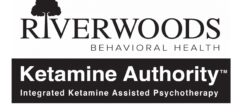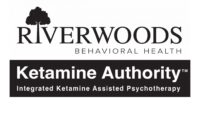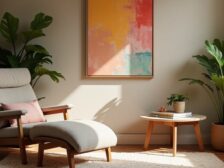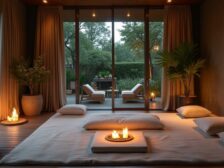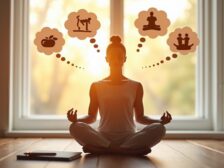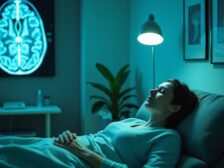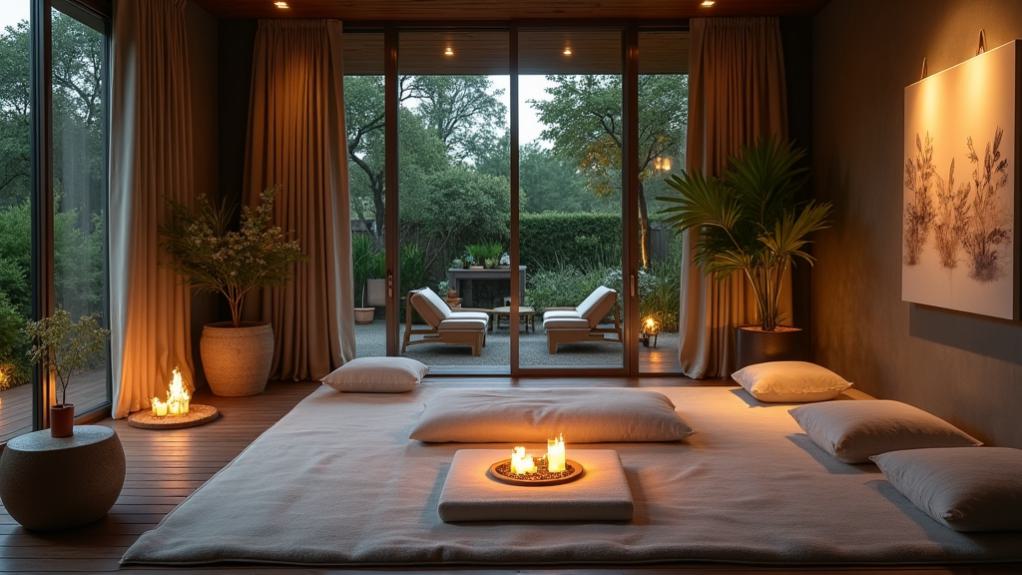
Creating a tranquil environment for psychedelic-assisted therapy is vital for patient comfort and therapeutic success. We focus on key elements like lighting, sound, and physical comfort to promote relaxation and emotional safety. Soft, warm lighting and soothing colors set the mood, while comfortable seating arrangements guarantee physical ease. We incorporate natural elements and biophilic design to ground patients and reduce anxiety. Aromatherapy and personalized comfort items enhance the sensory experience. By minimizing external distractions and prioritizing safety, we create a space conducive to healing and growth. Exploring these elements in depth can greatly improve the therapeutic setting and patient outcomes.
Importance of Therapeutic Setting
Many therapists underestimate the significant impact a well-designed therapeutic environment can have on their clients' progress. We must recognize that the setting in which therapy takes place plays an essential role in nurturing healing and growth. A carefully crafted therapeutic ambiance can enhance the effectiveness of psychedelic-assisted therapy sessions by promoting relaxation, openness, and introspection.
When we create a tranquil environment, we're not just decorating a room; we're cultivating a space that supports emotional safety and vulnerability. This allows clients to feel more comfortable exploring their inner experiences and confronting challenging emotions.
The right setting can help reduce anxiety, minimize distractions, and facilitate deeper connections between therapists and clients.
We should consider elements such as lighting, color schemes, comfortable seating, and natural elements to create a soothing atmosphere. Incorporating calming sounds or gentle music can further enhance the therapeutic experience.
Lighting and Color Psychology
Illumination and hues play an essential role in shaping the therapeutic atmosphere.
We've found that careful consideration of lighting and color can greatly impact the effectiveness of psychedelic-assisted therapy sessions. Color temperature, for instance, can influence a patient's emotional state and receptiveness to treatment. Warm, soft lighting often promotes relaxation and openness, while cooler tones may enhance focus and clarity.
Understanding hue psychology allows us to create environments that support specific therapeutic goals.
For example, blues and greens can evoke feelings of tranquility and growth, while purples might encourage introspection and spiritual connection.
We've observed that adjustable lighting intensity gives therapists the flexibility to adapt the room's ambiance to each patient's needs and the session's progression.
Comfortable Seating Arrangements
Beyond the visual elements, the physical comfort of patients during therapy sessions is paramount. We must carefully consider seating arrangements to create an environment that supports relaxation and openness.
Offering a variety of cushion options allows patients to choose what feels most comfortable for them, whether it's a plush armchair, a supportive therapy couch, or even floor cushions for those who prefer a more grounded experience.
Seating flexibility is key to accommodating different preferences and physical needs. We should arrange furniture in a way that allows for easy movement and adjustment. This might include having lightweight chairs that can be easily repositioned or modular seating that can be configured in various ways.
It's important to provide options for both upright and reclined positions, as some patients may feel more at ease sitting up while others prefer to lie down.
We should also consider the materials used in seating. Soft, breathable fabrics can enhance comfort and help regulate body temperature.
Additionally, incorporating elements like weighted blankets or ergonomic pillows can further support relaxation and create a sense of security during therapy sessions.
Soundscaping for Relaxation
Sound plays an essential role in creating a tranquil environment for therapy sessions. We need to carefully consider the auditory elements that contribute to relaxation and emotional well-being.
Ambient soundscapes can help create a soothing atmosphere, allowing clients to feel more at ease and open to the therapeutic process.
When selecting music, we should focus on pieces with gentle rhythmic patterns and calming melodies. These can help regulate breathing and heart rate, promoting a state of relaxation.
Incorporating nature sounds, such as flowing water or rustling leaves, can also enhance the sense of tranquility.
We can investigate the use of specific sound frequencies and binaural beats, which have been shown to influence brainwave activity and potentially induce altered states of consciousness.
However, it's important to use these techniques judiciously and in accordance with individual client needs.
Vocal guidance, when appropriate, can be integrated into the soundscape to provide gentle direction and support throughout the session.
Nature Elements and Biophilic Design
The gentle rustle of leaves and the soft trickle of water can transport us to a world of serenity. In therapy spaces, we can utilize nature's calming power through biophilic design. By incorporating natural materials like wood and stone, we create a grounding atmosphere that connects clients to the earth.
Indoor plants purify the air and provide a sense of life, while water features offer soothing sounds and visual interest. Organic textures in fabrics and furnishings mimic the tactile diversity found in nature, engaging our sense of touch.
We can further enhance the auditory experience with nature sounds, such as birdsong or gentle rain. Wildlife imagery on walls or in art pieces can inspire a sense of wonder and connection to the natural world. Green walls or vertical gardens bring lush vegetation indoors, altering sterile spaces into lively ecosystems.
Maximizing outdoor views and natural light helps maintain our circadian rhythms and reduces feelings of confinement. When possible, incorporating sensory gardens or outdoor therapy spaces allows direct interaction with nature, promoting mindfulness and relaxation.
Temperature and Air Quality
Maintaining ideal temperature and air quality is fundamental for creating a comfortable therapeutic environment.
We should aim for a room temperature between 68-72°F (20-22°C), as this range promotes relaxation without causing discomfort. It's essential to have adjustable heating and cooling systems to accommodate individual preferences and seasonal changes.
Humidity control plays a significant role in air quality. We recommend maintaining humidity levels between 40-60% to prevent dry air, which can cause irritation, or excess moisture that may lead to mold growth.
Using a hygrometer to monitor humidity levels can help us make necessary adjustments.
Proper air circulation is important for maintaining a fresh atmosphere.
We should consider installing an air purification system to remove allergens, dust, and other particles that might affect breathing or cause discomfort.
Opening windows periodically, if possible, can also help refresh the air and connect participants with the outside environment.
Minimizing External Distractions
External noise pollution can markedly impact the therapeutic process, making it vital to create a distraction-free environment. We must consider various sources of potential interruptions and implement strategies to minimize their impact.
One essential step is establishing a distraction-free zone within the therapy space, ensuring that external sounds like traffic, construction, or nearby conversations don't penetrate the room.
To achieve this, we can employ soundproofing techniques, such as using heavy curtains, acoustic panels, or white noise machines.
It's also important to address internal distractions. We should implement a strict mobile device management policy, requiring all participants to turn off or silence their phones and other electronic devices. This helps maintain focus and prevents unexpected notifications from disrupting the session.
We can further enhance the tranquil atmosphere by removing clutter, minimizing visual distractions, and creating a clean, organized space.
By carefully considering the layout and design of the therapy room, we're able to create an environment that promotes concentration and introspection.
Aromatherapy and Sensory Experiences
In addition to creating a visually calming environment, we can enhance the therapeutic experience through the power of scent and other sensory elements. Aromatherapy and sensory experiences play an essential role in setting the right mood and promoting emotional responses during psychedelic-assisted therapy sessions.
By carefully integrating therapeutic fragrances and essential oils, we can create a multi-layered sensory environment that supports the client's path.
When incorporating aromatherapy, consider the following:
- Choose scents known for their calming properties, such as lavender or chamomile
- Use diffusers or aromatic rituals to disperse fragrances evenly
- Introduce scents gradually to avoid overwhelming the senses
- Allow clients to select preferred scents for personalized comfort
Olfactory stimulation can greatly impact mood enhancement and emotional well-being.
By thoughtfully implementing scent integration techniques, we create an atmosphere that engages multiple senses, deepening the therapeutic experience. Sensory layering, which combines aromatherapy with other elements like soft lighting and comfortable textures, can further support the client's path.
Personalized Comfort Items
Comfort plays an essential role in creating a safe and supportive environment for psychedelic-assisted therapy sessions. We've found that incorporating personalized comfort items can greatly enhance a client's sense of security and ease during their experience.
These items serve as anchors, connecting individuals to familiar sensations and memories, which can be particularly grounding during intense moments of the session.
Personalized blankets are a popular choice, offering both physical warmth and emotional comfort. We often encourage clients to bring a favorite throw or quilt from home, imbued with personal significance.
Similarly, customized cushions can provide customized support for various sitting or reclining positions, ensuring physical comfort throughout the session. These might include specially designed meditation cushions or pillows with meaningful imagery or textures.
Other personal items that we've seen benefit clients include cherished photographs, small mementos, or even specific articles of clothing.
The key is to select items that connect deeply with the individual, nurturing a sense of safety and familiarity in what can be an intense and life-changing experience.
Safety and Emergency Preparedness
A therapist's paramount concern during psychedelic-assisted therapy sessions is guaranteeing client safety. We must be prepared for any potential emergencies that may arise during these intense experiences. Establishing clear emergency protocols and conducting regular participant check-ins are vital components of a safe therapy environment.
To maintain a safe space for our clients, we should:
- Create a detailed emergency response plan
- Keep essential medical supplies readily accessible
- Ascertain all therapists are trained in first aid and CPR
- Have emergency contact information for each participant on hand
By implementing these measures, we're better equipped to handle unexpected situations while maintaining a calm and supportive atmosphere.
It's important to remember that while safety is our top priority, we don't want to create an environment that feels clinical or sterile. Instead, we aim to strike a balance between preparedness and comfort.
Regular participant check-ins throughout the session allow us to monitor our clients' physical and emotional states. This practice helps us identify any potential issues early on and adjust our approach as needed.
In Summary
We've examined key elements for creating tranquil environments in psychedelic-assisted therapy. By thoughtfully considering lighting, sound, comfort, nature, and safety, we're able to craft spaces that support healing odysseys. While each session is unique, these principles provide a foundation for nurturing calm and introspection. As we continue to refine our approach, let's remember that the therapeutic setting plays an essential role in facilitating life-changing experiences. Together, we're shaping environments that honor the deep nature of this work.
